Class 10 SELINA Solutions Maths Chapter 15 - Similarity (With Applications to Maps and Models)
Selina Solutions is a collection which has solutions to all the questions covered in the respective subject book of Selina Publications. Here we explore how this provides a valuable contribution to the studies of ICSE students. The chapter "Similarity with Applications to Maps and Models" ofICSE Class 10 Math holds importance for students' examination and overall development.
This Class 10 curriculum chapter, "Similarity with Applications to Maps and Models", combines academic knowledge with real-world applications. It introduces learners to basic geometric ideas and their real-world uses. It provides students with fundamental abilities and information that they can use in diverse academic and professional settings outside the classroom.
Why Choose Selina Solutions?
The comprehensive guide of solutions is designed to enhance understanding and learning for exams in the following ways:
- The intricate concepts of similarity are broken down into clear and understandable step-by-step explanations to help easily grasp the basics of similarity.
- There are proper illustrative examples to explain practical applications of similarity in maps and models for the students.
- A great emphasis is on determining similarities in map creation by providing students with cartographers’ mathematical techniques to secure accurate models.
- Selina Solutions demonstrates the theories used by engineers, designers, and architects using similarity in scaled-down models. This helps link theory to practical use.
- There are ample practice exercises to reinforce learning and get relevant guidance.
Selina Solutions ensures accurate and dependable information because its authors are knowledgeable subject matter specialists. Selina Solutions for the Class 10 chapter "Similarity with Applications to Maps and Models" contain precise explanations and instructions that students may rely on. These, along withsample papers,MCQs,video lessons, and other study materials, are indispensable companions for ICSE students of Class 10.
Similarity (With Applications to Maps and Models) Exercise Ex. 15(A)
Solution 1(i)

Solution 1(ii)

Solution 2(i)
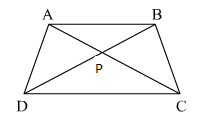

Solution 2(ii)


Solution 3(i)
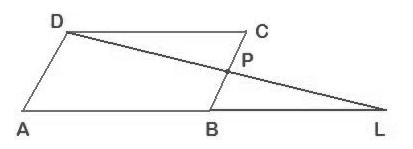

Solution 3(ii)


Solution 4(i)
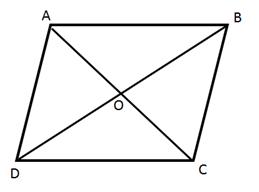

Solution 4(ii)
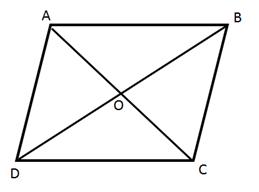

Solution 5(i)
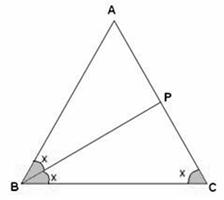

Solution 5(ii)

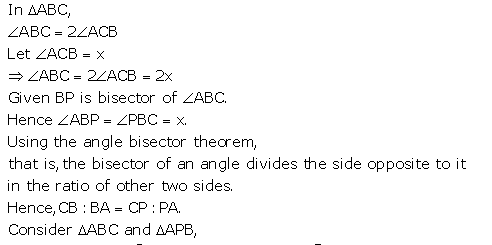


Solution 6
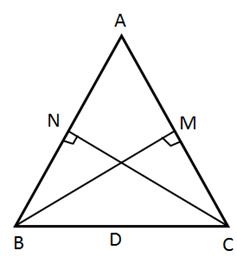

Solution 7(i)

Solution 7(ii)
In ΔADE and ΔABC
Solution 8

Solution 9

Solution 10


Solution 11
(i) False
(ii) True
(iii) True
(iv) False
(v) True
(vi) True
(vii) True
Solution 12

Solution 13
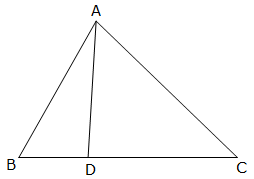

Solution 14
(i) In ∆ ABC and ∆ AMP,
![]() BAC=
BAC= ![]() PAM [Common]
PAM [Common]
![]() ABC=
ABC= ![]() PMA [Each = 90°]
PMA [Each = 90°]
∆ ABC ~ ∆ AMP [AA Similarity]
(ii)

Solution 15
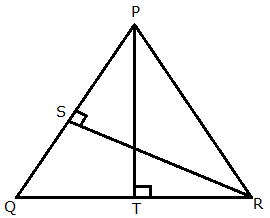
(i)

(ii)
Since, triangles PQT and RQS are similar.

Solution 16

Hence, DP ![]() CR = DC
CR = DC ![]() PR
PR
Solution 17

Solution 18
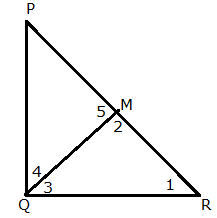
(i) In ![]() PQM and
PQM and ![]() PQR,
PQR,
![]() PMQ =
PMQ = ![]() PQR = 90o
PQR = 90o
![]() QPM =
QPM = ![]() RPQ (Common)
RPQ (Common)
![]()

(ii) In ![]() QMR and
QMR and ![]() PQR,
PQR,
![]() QMR =
QMR = ![]() PQR = 90o
PQR = 90o
![]() QRM =
QRM = ![]() QRP (Common)
QRP (Common)
![]()

(iii) Adding the relations obtained in (i) and (ii), we get,

Solution 19
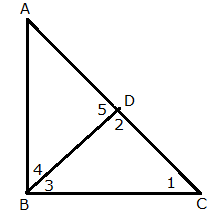
(i) In ![]() CDB,
CDB,
![]() 1 +
1 + ![]() 2 +
2 +![]() 3 = 180o
3 = 180o
![]() 1 +
1 + ![]() 3 = 90o ..... (1)(Since,
3 = 90o ..... (1)(Since, ![]() 2 = 90o)
2 = 90o)
![]() 3 +
3 + ![]() 4 = 90o .....(2) (Since,
4 = 90o .....(2) (Since, ![]() ABC = 90o)
ABC = 90o)
From (1) and (2),
![]() 1 +
1 + ![]() 3 =
3 = ![]() 3 +
3 + ![]() 4
4
![]() 1 =
1 = ![]() 4
4
Also, ![]() 2 =
2 = ![]() 5 = 90o
5 = 90o

Hence, AD = 6.4 cm

(iii)

Solution 20

Solution 21
Given, AE: EC = BE: ED
Draw EF || AB
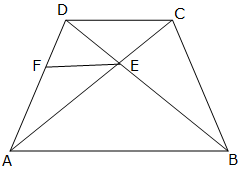
In ![]() ABD, EF || AB
ABD, EF || AB
Using Basic Proportionality theorem,

Thus, in ![]() DCA, E and F are points on CA and DA
respectively such that
DCA, E and F are points on CA and DA
respectively such that ![]()
Thus, by converse of Basic proportionality theorem, FE || DC.
But, FE || AB.
Hence, AB || DC.
Thus, ABCD is a trapezium.
Solution 22

Given, AD2
= BD ![]() DC
DC
![]()
![]()
So, these two triangles will be equiangular.

Solution 23
(i) The three pair of similar triangles are:
![]() BEF and
BEF and ![]() BDC
BDC
![]() CEF and
CEF and ![]() CAB
CAB
![]() ABE and
ABE and ![]() CDE
CDE
(ii) Since, ![]() ABE and
ABE and ![]() CDE are similar,
CDE are similar,

Since, ![]() CEF and
CEF and ![]() CAB are similar,
CAB are similar,

Solution 24
Given, QR is parallel to AB. Using Basic proportionality theorem,
![]()
Also, DR is parallel to QB. Using Basic proportionality theorem,
![]()
From (1) and (2), we get,

Solution 25
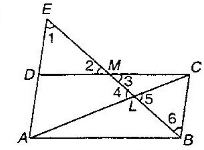
![]() 1 =
1 = ![]() 6 (Alternate
interior angles)
6 (Alternate
interior angles)
![]() 2 =
2 = ![]() 3 (Vertically
opposite angles)
3 (Vertically
opposite angles)
DM = MC (M is the mid-point of CD)
![]()
So, DE = BC (Corresponding parts of congruent triangles)
Also, AD = BC (Opposite sides of a parallelogram)
![]() AE = AD + DE = 2BC
AE = AD + DE = 2BC
Now, ![]() 1 =
1 = ![]() 6 and
6 and ![]() 4 =
4 = ![]() 5
5
![]()

Solution 26
(i) Given, AP: PB = 4: 3.
Since, PQ || AC. Using Basic Proportionality theorem,

Now, ![]() PQB =
PQB = ![]() ACB (Corresponding
angles)
ACB (Corresponding
angles)
![]() QPB =
QPB = ![]() CAB (Corresponding
angles)
CAB (Corresponding
angles)

(ii) ![]() ARC =
ARC = ![]() QSP = 90o
QSP = 90o
![]() ACR =
ACR = ![]() SPQ (Alternate
angles)
SPQ (Alternate
angles)

Solution 27
We have:

Solution 28
(i) Since, BD and CE are medians.
AD = DC
AE = BE
Hence, by converse of Basic Proportionality theorem,
ED || BC
In ![]() EGD and
EGD and ![]() CGB,
CGB,

(ii) Since, ![]()
![]()
In ![]() AED and
AED and ![]() ABC,
ABC,

From (1),

Similarity (With Applications to Maps and Models) Exercise Ex. 15(B)
Solution 1(i)
![]()
Now, DE is parallel to BC.
Then, by Basic proportionality theorem, we have

Solution 1(ii)

Solution 1(iii)

Solution 1(iv)

Solution 1(v)

Solution 2(i)
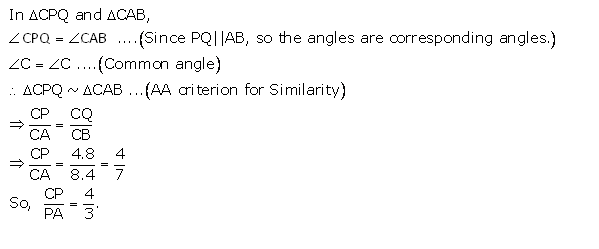
Solution 2(ii)
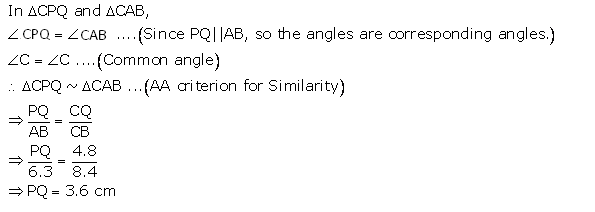
Solution 2(iii)
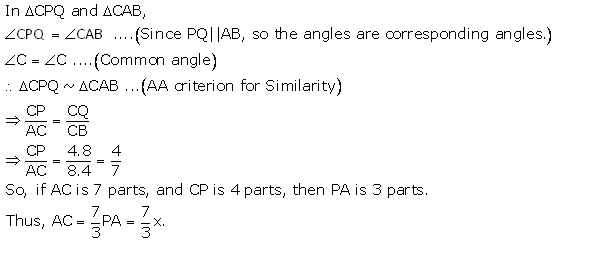
Solution 3

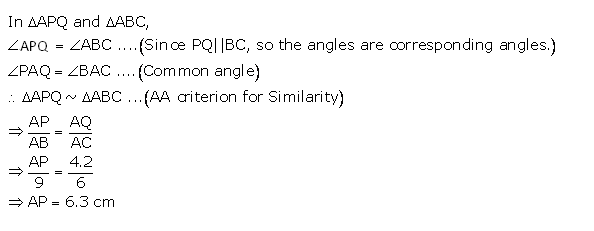
Solution 4(i)


Solution 4(ii)

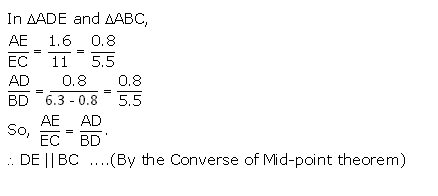
Solution 5
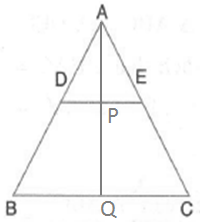


Solution 6
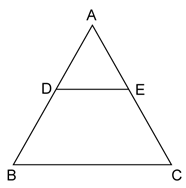

Solution 7
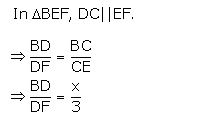

Similarly
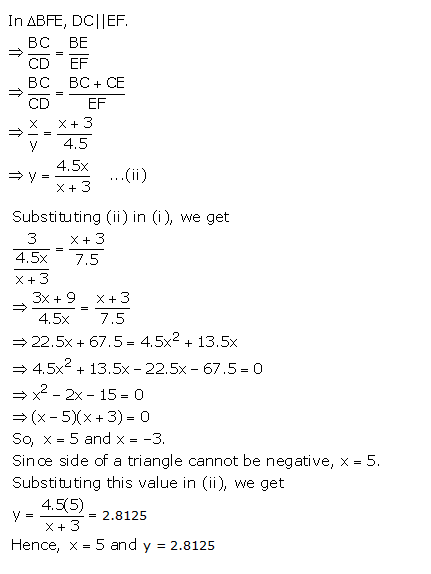
Solution 8

Solution 9

Solution 10
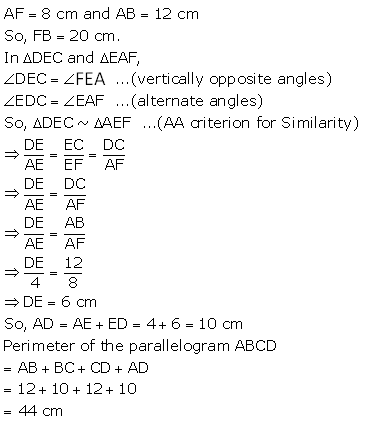
Similarity (With Applications to Maps and Models) Exercise Ex. 15(C)
Solution 1
We know that the ratio of the areas of two similar triangles is equal to the ratio of squares of their corresponding sides.
(i) Required ratio = ![]()
(ii) Required ratio = ![]()
Solution 2
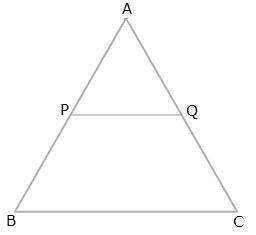
(i) AP =![]() PB
PB ![]()

(ii)

Solution 3
Let ![]()

Solution 4
Given, ![]()
(i)

(ii)

Solution 5

From the given information, we have:

Solution 6
(i)

(ii) Since ![]() LMN and
LMN and ![]() MNR have common vertex at M and their bases LN and NR are along the same straight line
MNR have common vertex at M and their bases LN and NR are along the same straight line

(iii) Since ![]() LQM and
LQM and ![]() LQN have common vertex at L and their bases QM and QN are along the same straight line
LQN have common vertex at L and their bases QM and QN are along the same straight line

Solution 7
(i)

(ii)

Solution 8


Solution 9

Solution 10
(i) Since ![]() APB and
APB and ![]() CPB have common vertex at B and their bases AP and PC are along the same straight line
CPB have common vertex at B and their bases AP and PC are along the same straight line
![]()
(ii) Since ![]() DPC and
DPC and ![]() BPA are similar
BPA are similar
![]()
(iii) Since ![]() ADP and
ADP and ![]() APB have common vertex at A and their bases DP and PB are along the same straight line
APB have common vertex at A and their bases DP and PB are along the same straight line

(iv) Since ![]() APB and
APB and ![]() ADB have common vertex at A and their bases BP and BD are along the same straight line
ADB have common vertex at A and their bases BP and BD are along the same straight line

Solution 11

(i) Given, DE || BC and ![]()
In ![]() ADE and
ADE and ![]() ABC,
ABC,
![]() A =
A = ![]() A(Corresponding Angles)
A(Corresponding Angles)
![]() ADE =
ADE = ![]() ABC(Corresponding Angles)
ABC(Corresponding Angles)
![]()
![]() (By AA- similarity)
(By AA- similarity)
![]()
![]() ..........(1)
..........(1)
Now![]()
Using (1), we get![]() .........(2)
.........(2)
(ii) In ![]() DEF and
DEF and ![]() CBF,
CBF,
![]() FDE =
FDE = ![]() FCB(Alternate Angle)
FCB(Alternate Angle)
![]() DFE =
DFE = ![]() BFC(Vertically Opposite Angle)
BFC(Vertically Opposite Angle)
![]()
![]() DEF
DEF ![]()
![]() CBF(By AA- similarity)
CBF(By AA- similarity)
![]() using (2)
using (2)
![]() .
.
(iii) Since the ratio of the areas of two similar triangles is equal to the square of the ratio of their corresponding sides, therefore
![]()
Solution 12

Similarity (With Applications to Maps and Models) Exercise Ex. 15(D)
Solution 1(i)

Solution 1(ii)


Solution 2(i)

Solution 2(ii)

Solution 3(i)

Solution 3(ii)

Solution 3(iii)

Solution 3(iv)
Given that triangle ABC is enlarged and the scale factor is m = 3 to the triangle A'B'C'.
OC = 21 cm
So, (OC)3 = OC'
i.e. 21 x 3 = OC'
i.e. OC' = 63 cm

Solution 4(i)

Solution 4(ii)

Solution 5



Solution 6(i)
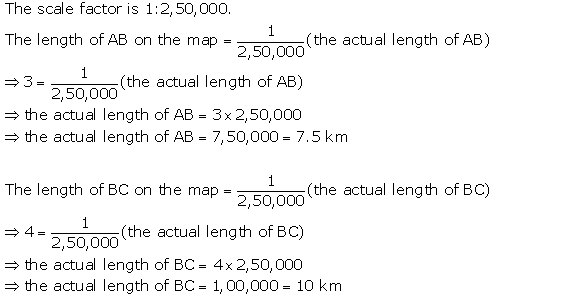
Solution 6(ii)

Solution 7
![]()


Similarity (With Applications to Maps and Models) Exercise Ex. 15(E)
Solution 1(i)

Solution 1(ii)
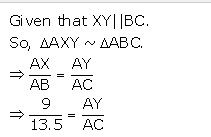

Solution 1(iii)
Given that XY || BC
So, △AXY ∼ △ABC
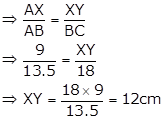
Solution 2(i)

Solution 2(ii)

Solution 2(iii)
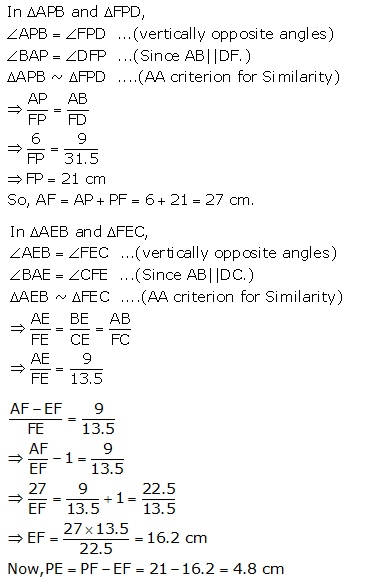
Solution 3

Solution 4
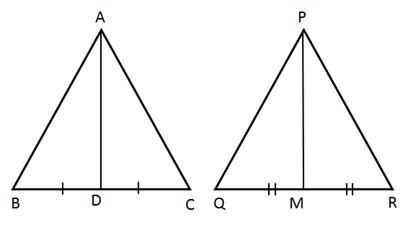
Triangle ABC is similar to triangle PQR

Solution 5
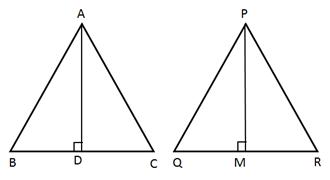

Solution 6
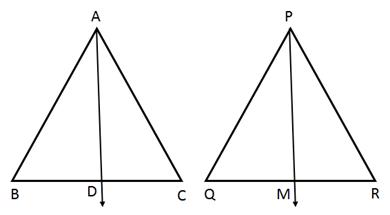

Solution 7

Solution 8
Join AR.

In ![]() ACR, BX || CR. By the Basic Proportionality theorem,
ACR, BX || CR. By the Basic Proportionality theorem,
![]()
In ![]() APR, XQ || AP. By the Basic Proportionality theorem,
APR, XQ || AP. By the Basic Proportionality theorem,
![]()
From (1) and (2), we get,
![]()
Solution 9

Solution 10(i)

Solution 10(ii)

Solution 11(i)

Solution 11(ii)

Solution 11(iii)

Solution 12
In ![]() ABC, PR || BC. By Basic proportionality theorem,
ABC, PR || BC. By Basic proportionality theorem,
![]()
Also, in ![]() PAR and
PAR and ![]() ABC,
ABC,

Similarly, ![]()

Solution 13

BF + FE = 2BF
Hence,
FE = BF
(ii) In ![]() AFD, EG || FD. Using Basic Proportionality theorem,
AFD, EG || FD. Using Basic Proportionality theorem,
![]() … (1)
… (1)
Now, AE = EB (as E is the mid-point of AB)
AE = 2EF (Since, EF = FB, by (i))
From (1),
![]()
Hence, AG: GD = 2: 1.
Solution 14
Let us assume two similar triangles as ![]() ABC
ABC ![]()
![]() PQR
PQR

Solution 15
The ratio between the altitudes of two similar triangles is same as the ratio between their sides.
(i) The ratio between the medians of two similar triangles is same as the ratio between their sides.
![]() Required ratio = 3: 5
Required ratio = 3: 5
(ii) The ratio between the perimeters of two similar triangles is same as the ratio between their sides.
![]() Required ratio = 3: 5
Required ratio = 3: 5
(iii) The ratio between the areas of two similar triangles is same as the square of the ratio between their corresponding sides.
![]() Required ratio = (3)2 : (5)2 = 9: 25
Required ratio = (3)2 : (5)2 = 9: 25
Solution 16
The ratio between the areas of two similar triangles is same as the square of the ratio between their corresponding sides.
So, the ratio between the sides of the two triangles = 4: 5
(i) The ratio between the perimeters of two similar triangles is same as the ratio between their sides.
![]() Required ratio = 4: 5
Required ratio = 4: 5
(ii) The ratio between the altitudes of two similar triangles is same as the ratio between their sides.
![]() Required ratio = 4: 5
Required ratio = 4: 5
(iii) The ratio between the medians of two similar triangles is same as the ratio between their sides.
![]() Required ratio = 4: 5
Required ratio = 4: 5
Solution 17
In ![]() PXY and
PXY and ![]() PQR, XY is parallel to QR, so corresponding angles are equal.
PQR, XY is parallel to QR, so corresponding angles are equal.
![]()
Hence, ![]() (By AA similarity criterion)
(By AA similarity criterion)

(i) We know that the ratio of areas of two similar triangles is equal to the ratio of the squares of their corresponding sides.

(ii) Ar (trapezium XQRY) = Ar (![]() PQR) - Ar (
PQR) - Ar (![]() PXY)
PXY)
= (16x - x) cm2
= 15x cm2
Solution 18
Scale :- 1 : 20000
1 cm represents 20000 cm= ![]() = 0.2 km
= 0.2 km
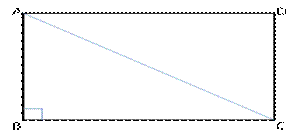
(i)
![]()
= ![]()
= 576 + 1024 = 1600
AC = 40 cm
Actual length of diagonal = 40 ![]() 0.2 km = 8 km
0.2 km = 8 km
(ii)
1 cm represents 0.2 km
1 cm2 represents 0.2 ![]() 0.2
0.2 ![]()
The area of the rectangle ABCD = AB ![]() BC
BC
= 24 ![]() 32 = 768
32 = 768![]()
Actual area of the plot = 0.2 ![]() 0.2
0.2 ![]() 768
768 ![]() = 30.72 km2
= 30.72 km2
Solution 19
The dimensions of the building are calculated as below.
Length = 1 ![]() 50 m = 50 m
50 m = 50 m
Breadth = 0.60 ![]() 50 m = 30 m
50 m = 30 m
Height = 1.20 ![]() 50 m = 60 m
50 m = 60 m
Thus, the actual dimensions of the building are 50 m ![]() 30 m
30 m ![]() 60 m.
60 m.
(i)
Floor area of the room of the building ![]()
(ii)
Volume of the model of the building
![]()
![]()
Solution 20

(iii)

Solution 21
Triangle ABC is enlarged to DEF. So, the two triangles will be similar.
![]()
Longest side in ![]() ABC = BC = 6 cm
ABC = BC = 6 cm
Corresponding longest side in ![]() DEF = EF = 9 cm
DEF = EF = 9 cm
Scale factor = ![]() = 1.5
= 1.5

Solution 22
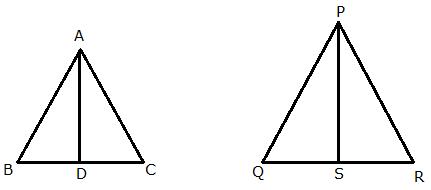
Let ABC and PQR be two isosceles triangles.
Then, ![]()
Also, ![]() A =
A = ![]() P (Given)
P (Given)
![]()
Let AD and PS be the altitude in the respective triangles.
We know that the ratio of areas of two similar triangles is equal to the square of their corresponding altitudes.

Solution 23
In triangle ABC, PO || BC. Using Basic proportionality theorem,

(i)

(ii)

Solution 24

Solution 25
In ![]() ABC and
ABC and ![]() EBD,
EBD,
![]() ACB =
ACB = ![]() EDB (given)
EDB (given)
![]() ABC =
ABC = ![]() EBD (common)
EBD (common)
![]() (by AA- similarity)
(by AA- similarity)
(i) We have, ![]()
(ii) ![]()

Solution 26

Solution 27(i)

Solution 27(ii)

Solution 27(iii)

Solution 28(i)

Solution 28(ii)

Solution 28(iii)
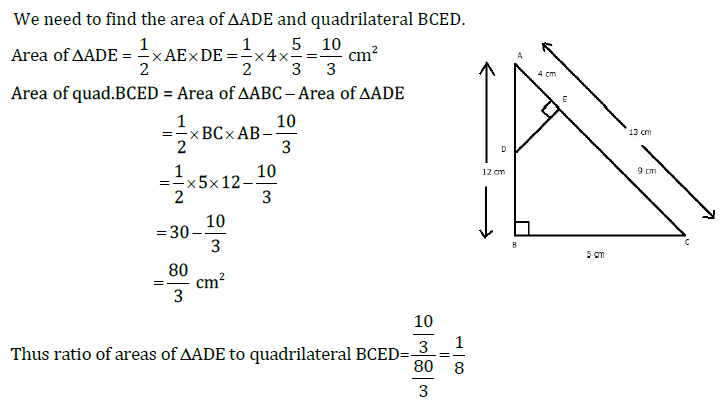
Solution 29
(i) In ![]() AGB, DE || AB , by Basic proportionality theorem,
AGB, DE || AB , by Basic proportionality theorem,
![]() .... (1)
.... (1)
In ![]() GBC, EF || BC, by Basic proportionality theorem,
GBC, EF || BC, by Basic proportionality theorem,
![]() .... (2)
.... (2)
From (1) and (2), we get,
![]()
![]()
(ii)
From (i), we have:

Solution 30
i.
In ∆PQR and ∆SPR,
∠PSR = ∠QPR … given
∠PRQ = ∠PRS … common angle
⇒ ∆PQR ∼ ∆SPR (AA Test)
ii. Find the lengths of QR and PS.
Since ∆PQR ∼ ∆SPR … from (i)
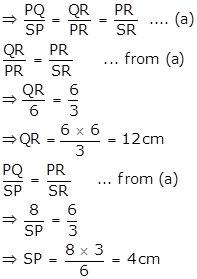
iii.
![]()

